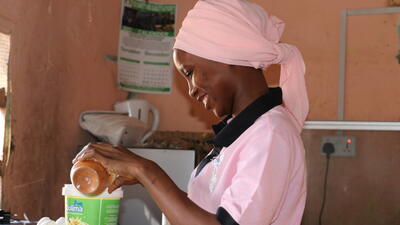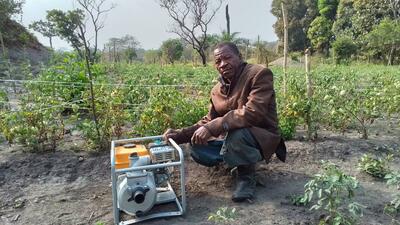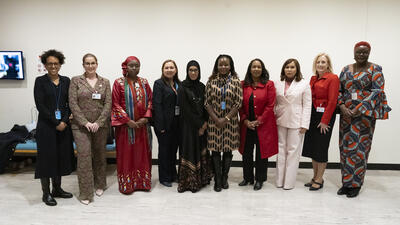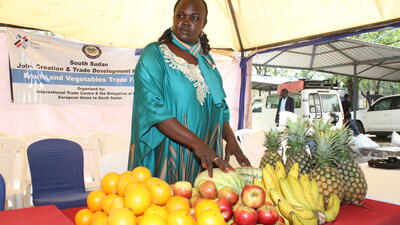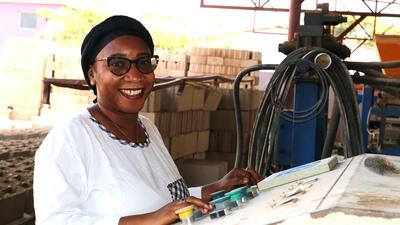
Harnessing export potential to create employment opportunities for women
Export potential data can help policymakers make better decisions on which sectors promise job opportunities for women
Creating an inclusive economy is critical for making progress towards achieving Goal 5 of the United Nations 2030 Agenda for Sustainable Development – empowering all women and girls. Yet, making real progress in this regard relies on creating more and better employment opportunities for women. Export potential data supplied by the International Trade Centre (ITC) serves to estimate potential job creation by gender across industries in order to guide policy actions that promise more employment opportunities for women towards specific sectors.
TRADE ANALYSIS, SIMPLIFIEDExport potential refers to the pattern of trade that you could reasonably expect between two countries for a specific product when taking into account supply, demand and the relative strength of the bilateral trade relationship between them. It simplifies market research by highlighting opportunities with room for additional export growth by comparing real trade values to the calculated potential benchmark values.
To make this information accessible to businesses and policymakers around the world, ITC launched Export Potential Map (exportpotential.intracen.org), a free, forward-looking tool that provides comparable information about untapped potential across suppliers, products and markets. It turns economic analysis into practical trade information, revealing untapped opportunities for export growth. It also offers opportunities for diversification with favourable chances of export success for 226 countries and territories across more than 4,200 products.
Policymakers may be seeking to optimize employment opportunities for specific groups by gender, age, skill level or region. With access to information about the job possibilities for each group that derive from the export potential of different economic sectors, they can better target sectoral support, adapt their strategies according to their development plans and the specificities of their labour markets and evaluate how the gains from trade could be distributed within the general economy.
Export potential data provides an overview of sectors with additional room for growth to estimate the direct and indirect employment impacts associated with a full utilization of their untapped potential. Direct effects arise because the additional exports raise demand for labour in the same sector. Indirect effects result from this sector being interconnected with other input sectors in the economy, where labour demand will rise as well.
Linking export opportunities with employment effects provides policymakers with a comparison of the formal jobs likely to be created across sectors if export potential is realized. Such employment impacts distribute unevenly across sectors and economic actors, thus recognizing in which sectors more opportunities for women are likely to emerge is crucial. This again can help inform policymakers on how to foster inclusive growth.
Thus far, the methodology has been piloted in eight countries: Benin, Morocco, Ghana, Guatemala, Jordan, Myanmar, Rwanda and the Philippines. The diversity in productive structures and untapped export potential across countries provided a rich array of outcomes for comparison. We highlight the results for Morocco and the Philippines demonstrating the number of jobs that could be created across sectors and by gender, allowing policymakers to design programmes that economically empower women.
In the case of Morocco, the employment estimation results revealed that realizing the untapped potential in the apparel, food and beverage, and agriculture sectors could serve to create over 230,000 jobs for women. It also showed the apparel, textile, and leather sectors were likely to create the greatest share of opportunities for women relative to those created for men, while there would be proportionately fewer opportunities for women associated with the electric machinery sector, in which women hold only 30% of the jobs on average.
In the Philippines, over 575,000 potential jobs for women are associated with realizing export potential in computers, electronics and optical products, food products, apparel and wood products. The relatively large number of jobs associated with realizing export potential in the food and wood-products sectors stem from indirect opportunities created in the labour-intensive agricultural sector that provides many inputs into the food- and wood-processing industries. In the apparel sector, most of the new jobs will be for women as the sector already employs a higher share of women relative to men.
This analysis allows policymakers to evaluate how gains from trade could be distributed within the domestic economy depending on the sectors prioritized for export growth. This demonstrates how access to multifaceted and robust information on untapped export opportunities can help inform government officials about the trade-offs their country faces in potential export revenue and the economic empowerment of different actors. Understanding where the greatest potential for empowering women lies is the first step towards creating more and better employment opportunities for women.









